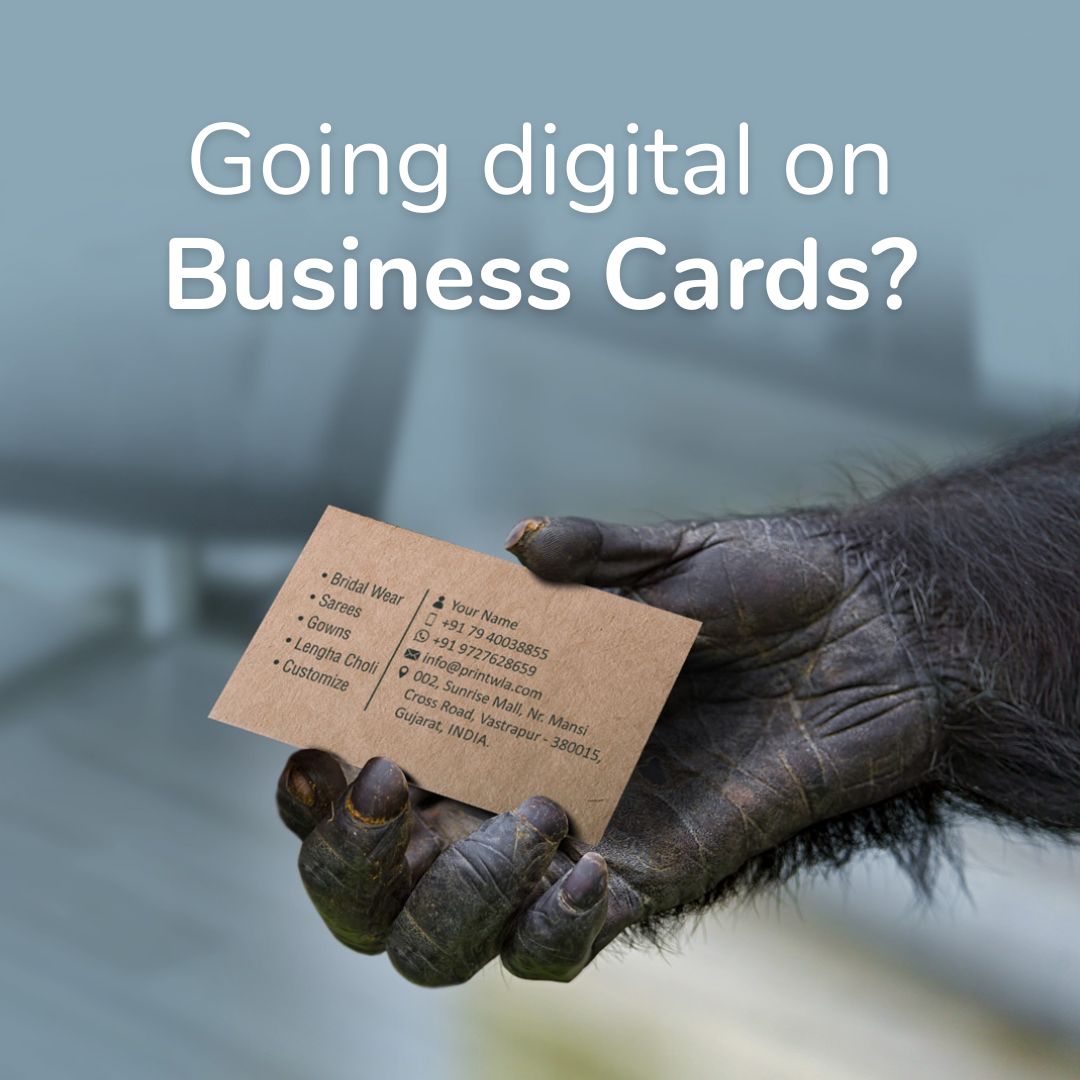Going digital on Business Cards?


Paper format is officially dead!
Depending on the culture, this could take just a few seconds or be an ice-breaking moment which triggers the first conversation and interaction.
How you presented the card (one hand vs. two hands – especially in Asia), the material from which it was made, whether it had printed letters standout, the choice of colors, how logo & branding were exposed, the shape of the card, etc. – All that was part of this “first impression” experience. Indeed, how you present yourself is who you are!
It is no secret that digital transformation has enabled many other means for doing business, thereby gradually replacing some of the physical encounters with virtual ones. Now with a coronavirus reality, we are obliged to conduct business virtually, at least for some time, but this will surely become more than just a trend. For now, “Social Distancing” has become the new reality, it is also what sparks the need for shifting to digital by all means.
In that regard, paper business cards have become not only obsolete but also potentially dangerous in the context of the current pandemia.
Networking with a digital business card is the new standard.
This article aims at providing some tips and considerations for those professionals and companies that wish to evaluate the pros & cons of a successful transition to digital business cards for an impactful first impression!
THE POWER & BENEFITS OF THE VIRTUAL BUSINESS CARD FORMAT
It’s always online – it never gets lost – it can be modified at any time;
It’s eco-friendly – a great substitute to printing;
It positions your business as an “early adopter” / an “innovator”;
It improves your company’s brand exposure, reputation and adds a viral effect (not to be confused with coronavirus!);
It provides a digital identity and a sense of belonging to your employees;
It’s an optimal format for personal brands.
It’s budget-friendly
BUDGETARY ASPECTS
Before transitioning to digital cards, companies must contemplate the following:
How many employees actually need a business card? – typically, mostly customer-facing divisions – but not only – that includes Management, Commercial team, Marketing, IT, Communications, HR, PR, etc. That said, since the digital format is more financially accessible (let aside all other benefits), many companies extend it to all their employees with the aim of improving employee loyalty and thereby strengthen their bond with the company.
Current yearly budget assigned to business cards: a digital format must end-up being more cost-effective. Therefore, it’s important having a benchmark as a means of comparison: how many cards does your company print annually? At what cost? How long does it take? Does it include design? How many resources are involved?
Hidden costs: such benchmark must consider (a) the cost of the human factor (generally executive assistants) involved in ordering paper business cards to the printing company in such occasions as the initial order, follow-ups on delivery, follow-up on orders per employee when their stock gets exhausted, new orders in case of a change of position or new contact details or launch of a new branding, etc. (b) the logistics factor: each order implies an associated cost of delivery by courier; (c) the design factor: branding work is typically delegated to a 3rd party design agency which generates an extra cost that must be computed. And finally (d) when an employee leaves the company, the investment in business cards translates into a loss.
Pricing of digital business cards: should ideally be volume & feature-based and above all, be significantly more cost-effective than paper.
A BUILT-IN DESIGN TOOL
A truly personalized digital business card cannot be relying upon standard templates or generic images. Personalization = Design = Aesthetics. Is it not all about brand recognition and top of mind? The solution proposed must provide a built-in design tool that allows for any non-technical user to:
Personalize every aspect of the business card;
Load images (profile, logo, pictures, etc.);
Change fonts family type;
Format text and paragraphs: by influencing the weight, the color, the opacity, the size and the direction (vertical / horizontal);
Change and personalize background colors;
Incorporate a variety of content types: images, video links, google map locations, buttons that can link to any online content, text boxes, title boxes, blank spaces for a clean look;
In summary: a design toolkit that will satisfy all those obsessed by the details
CONCEIVED FOR “HUMAN RESOURCES” & “COMMUNICATIONS” AREAS
In the case of large companies: HR and/or Communications areas must not depend on an external provider. The platform must allow for self-provisioning and auto-administration of all the company’s business cards from a single account.
HR and/or Communications areas should be able to manage the service in a centralized fashion so as to keep control and maintain a standardized, uniform design and branding. Employees should not have permission to access and modify their business card(s) – unless authorized of course.
CSR – ECO-FRIENDLY
Corporate Social Responsibility plays an important role in selecting an eco-friendly solution which truly substitutes the use of paper.
MUST HAVE FEATURES OF AN ONLINE BUSINESS CARD SERVICE
QR code for instant sharing from mobile to mobile during a physical or virtual encounter. Once scanned, contact details of the business card should automatically travel to the other device’s address book and be saved with a single click;
Additional sharing options such as via Email, SMS, WhatsApp, Linkedin, Facebook, Skype, Reddit, Line, Pinterest, etc. Recipients of a business card must have the option to easily save the contact details to the address book in a single click;
Allow deep customization of all business cards to the company’s brand;
Self-management with strong autonomy for making changes as needed: activate or deactivate cards, edit design, duplicate, delete, edit text, edit & add different content types;
Statistics on how each business card performs: how many views? From what geographical locations? How many times was it shared? By what means? Which links within my card were clicked? Etc.;
An elegant digital signature for your email that links to your online business card thereby achieving at the same time standardization of signature format across the company;
Organize business cards in folders by area (i.e. Sales, Marketing, Administration, etc.) or group them by business unit, etc.;
Privacy & security: the platform on which the service is hosted must be secured to avoid data loss to hackers and guarantee high availability;
Business card users must be able to save their own business card(s) as a widget to the mobile’s home screen;
Finally, it is always reassuring when a company can provide solid references of highly satisfied customers. I hope those tips are helpful. Do not hesitate sharing them!
Should you wish to contact me, here’s my business card.
Warm regards and keep safe!
Roni Grosfeld | Co-Founder of Linkcard.app



















